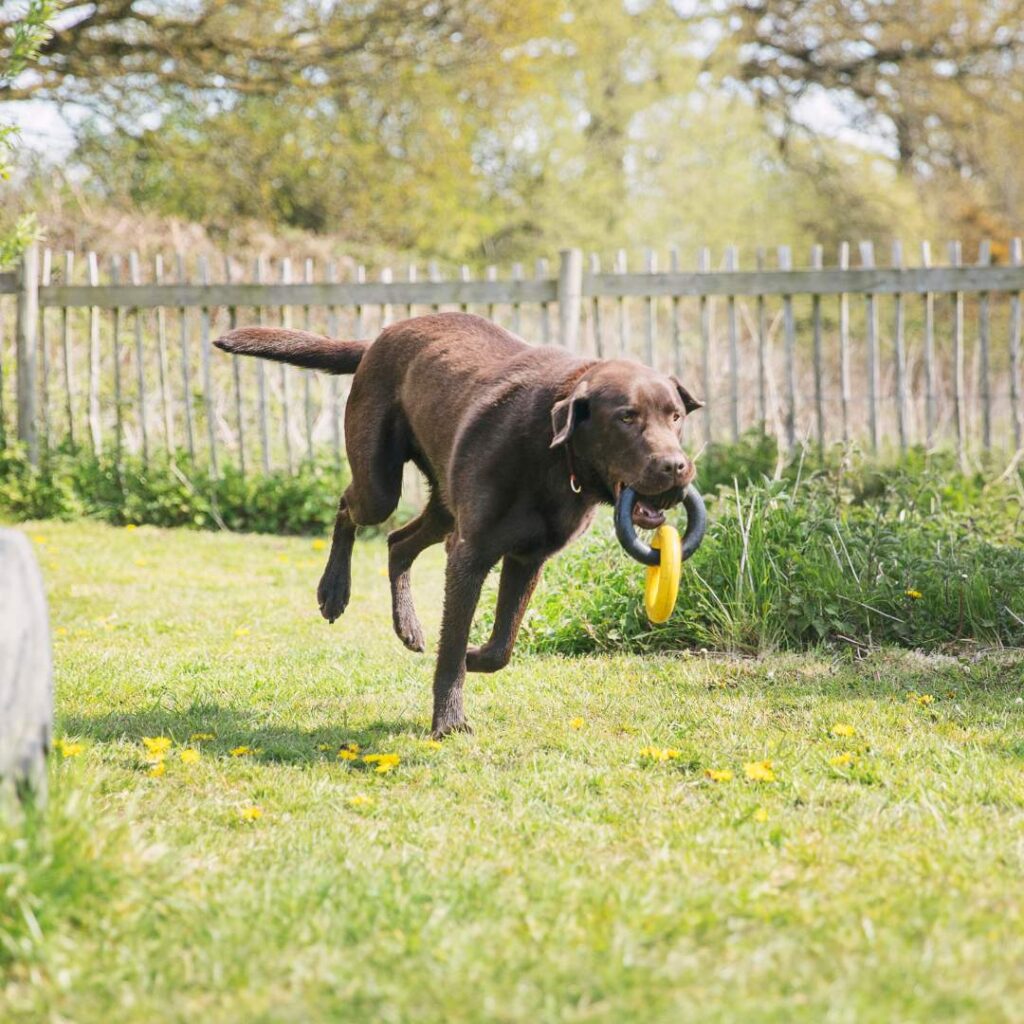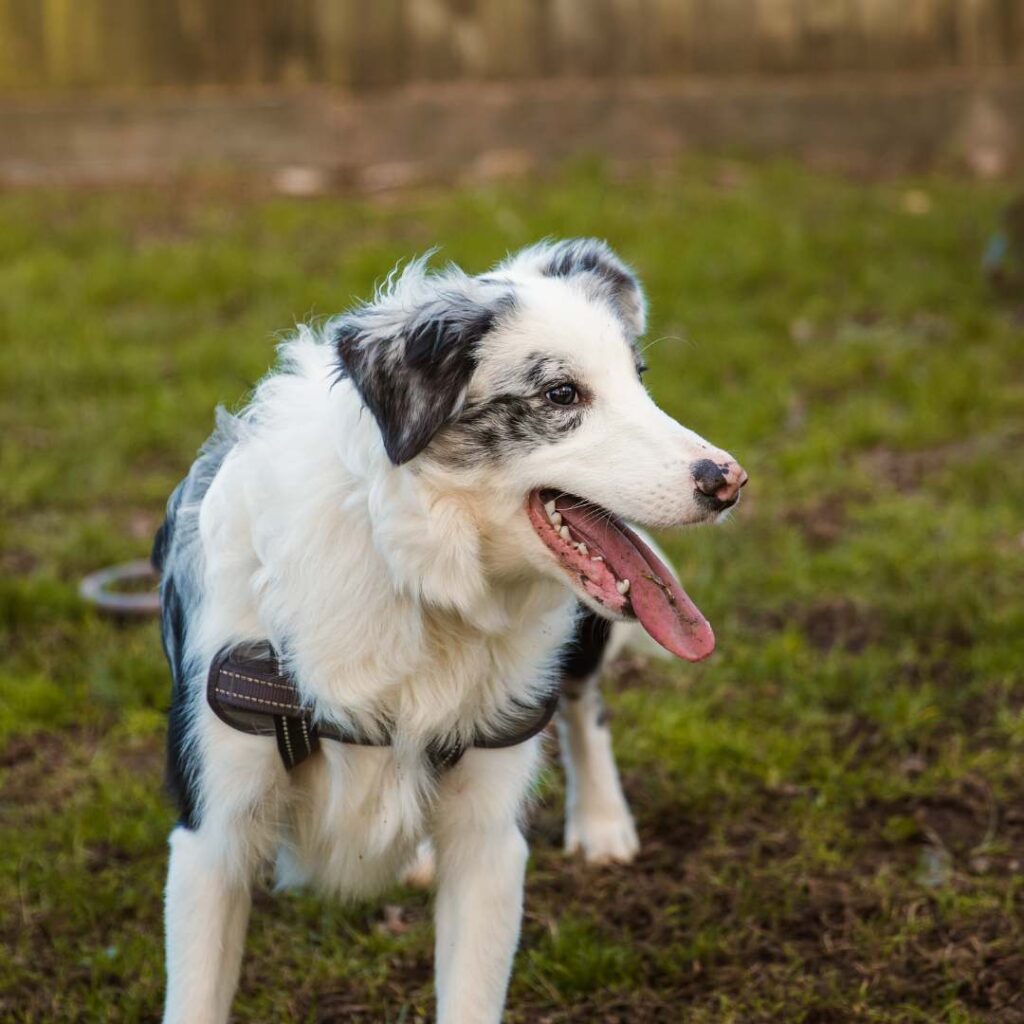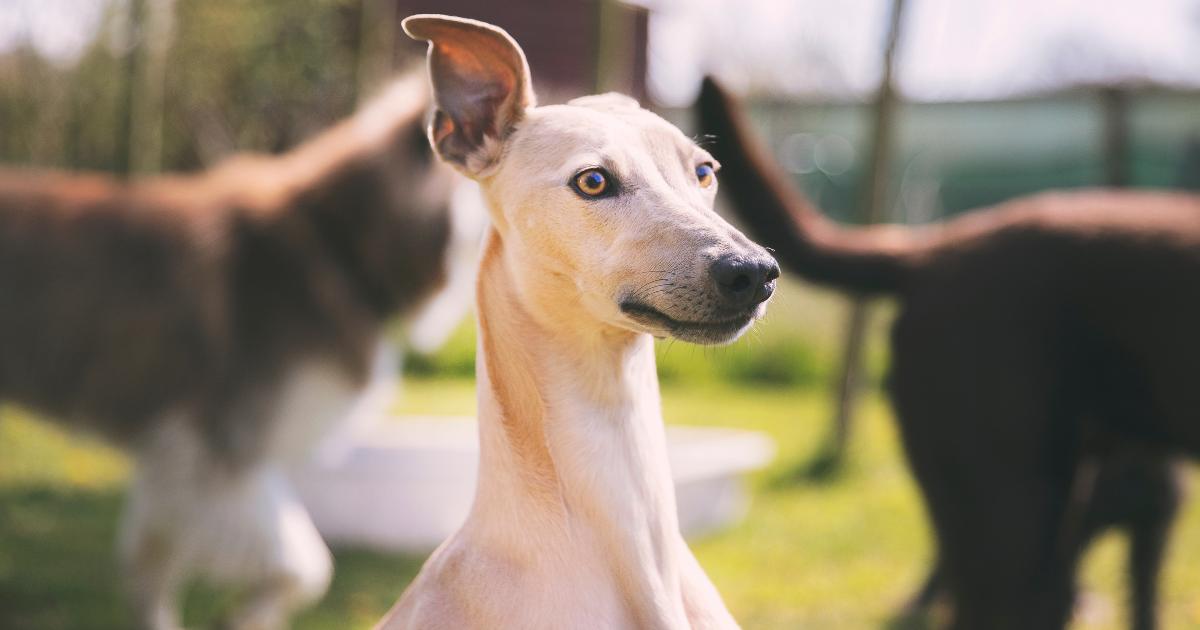When it comes to training your dog, it’s easy to think they’re the same – just some are bigger, smaller, hairier or more colourful than others. In fact, the domestic dog (Canis familiaris) comes in more variations of type than any other mammal on the planet. So if you think about it, it seems impossible that a Chihuahua and a Great Dane can even be the same species. And so you may find yourself wondering, do these breed types and differences impact training?
The evolution of dogs and breed types
Only around 20% of the world’s canine population are owned, so if you look at village dogs internationally, you’ll see the domestic dog is a fairly standard looking animal. Around 19 inches high (often smaller in hot countries, bigger in cold ones), various shades of brown, drop ears and a tail curled like a ‘C’ over their backs… So what happened?
Humans!
We worked out early into our relationship with dogs there were some jobs dogs were perfect for. Our ancestors didn’t care what these dogs looked like, just that they could do that job.
In some cases, it was guarding, others herding, retrieving, or hunting, and even as companions and early warning systems…. But in order to develop these working dogs, they took those who were experts at a certain job and bred them with others who showed the same working ability, and so on. This went on until the true canine specialists had been produced, and then was fine-tuned through the ages.
During this process, it was discovered breeding for working ability quickly developed a different form or type of dog who was physically best able to do that job. For example, if you want to breed dogs who run faster, you’re going to end up with lightweight, long-legged deep chested dogs – as that shape goes with that behaviour. We’ve been doing that for thousands of years, and these formed the breed types we know today.
How did this turn into breed types?
The reason dogs could be trained to be experts at a task was because they have a predatory motor sequence they use to hunt food – when they’re not scavenging of course. This is:
- Eye – locate and watch the thing
- Stalk – creep up on it so you can get as close as possible before it knows you’re there
- Chase – run after it
- Grab by biting – get hold of it to stop it
- Final bite
- Time to eat
To develop breeds and breed types, humans took dogs who were really good at certain bits of that sequence, but weren’t great at other bits, and used them for breeding to create specialists.
For example:
- Retrievers focus on “eye, stalk, chase, grab by biting” – see it, get it, carry it around
- Border Collies focus on “eye, stalk, chase” – see it, stalk it, chase it
Not only did these dogs have the perfect working ability for their environment, but they didn’t just like doing these things, they needed to do them.
The reason they do that is because nature, which is incredibly clever, devised a way of making it fun. Whether or not it is successful, it’s fun – in other words it doesn’t need to be externally rewarded.
Just going through the motions is rewarding for an animal. If it wasn’t, they wouldn’t keep trying to hunt for food after their first few failures, so the animal’s own brain produces the reward by releasing feel-good chemicals. Their brains are designed to seek out that feeling – because it makes them feel good.

What does that mean for modern day dogs?
What we need to remember is while we’ve selectively bred for a dog who does a job, that job doesn’t necessarily make them easy to live with. Their original job might make them suspicious of strangers, reactive, fearful, noisy, dig, follow a scent while ignoring everything else, or even be so bonded to their owners they can’t be left.
All of these are things that regularly come up as behaviour problems. And the key thing to remember is not all dogs are the same. And they’re dogs, so they’re going to act like dogs.
Don’t judge a Terrier by a Gundog
When it comes to dogs and training/lifeskills, we have to rethink our mindset.
It’s easy to look at the training class star – nearly always a Border Collie – and think our dogs are stupid in comparison. This couldn’t be further from the truth. Training classes, or certainly traditional classes, tap into a Border Collie’s skill set, so it’s easier for them to excel.
Each breed or type works with different rules, as they’ve evolved differently to best take advantage of their niche. Einstein said if you judge a fish by its ability to climb a tree, it will spend its entire life thinking it is stupid – and it’s the same with dogs.
Every breed has its own individual strengths and weaknesses. And it’s up to owners to discover those and then give their dog the environment to succeed at those, and enjoy life to the fullest.
The secret – ideally before you get your dog – is to look at what that breed (or combination of breeds) was originally bred to do, and how much of the day they would spend doing it.
This’ll give you a good idea of how you need to socialise and habituate them, how to live with them, what they’ll love doing – and how many hours of the day they need to do it. Knowing their breed or breed type will also give you all important clues on how to train and motivate them.
As a bonus, this can give you a heads-up on potential behaviour issues to focus on preventing or managing.
Successful training with your dog isn’t about turning your Beagle (or whatever breed you have) into a Border Collie (they never will be) – it’s about giving your Beagle the chance to be the very best and happiest Beagle they can be, and in turn for you to have the very best relationship.

Breed types explained
Gundogs – Golden Retriever, Labrador Retriever, Cocker Spaniel
Work tirelessly and enthusiastically all day and in every weather, paying no attention to gun shots, other dogs and unknown people, focused only on their job. Easier to socialise and habituate than many groups.
- Need a lot of exercise and stimulation every single day
- Often busy dogs
- As many are retrieving breeds, they can be mouth and object-focussd so can be chewers, enjoy carrying things around, and need reward-based ‘swapping’ training to give them back happily
Read more on how to choose treats and how to stop chewing.
Pastoral/Herding Dogs – Border Collie, German Shepherd, Old English Sheepdog
Clever, highly trainable, work closely with owner, and very task-oriented. Need plenty of early socialisation and habituation. May guard if their job required flock guarding.
- Need a lot of exercise and stimulation – these are dogs who thrive with a job to do
- Very trainable, highly intelligent, and ideal for competing in dog sports
- Without enough exercise, training and enrichment, they can become bored and frustrated very quickly (which can give rise to behaviour problems)
- Can chase and herd – and might struggle with overly stimulating environments!
Read more about resource guarding and enrichment tips.
Terriers – Jack Russell Terrier, Border Terrier, Cairn Terrier
Bred to react quickly to fearlessly catch and kill vermin in a variety of environments.
- While they’re small dogs, they’re active and need a surprising amount of exercise and enrichment
- Many of the Terrier breeds can be quite feisty and might not be keen on other unknown dogs (unless bred to work with a pack), so ongoing socialisation and training is important
- Can be noisy – and many love to dig!
Read more about types of barking and how to help.
Hounds – Beagle, Saluki, Whippet, Irish Wolfhound
Hounds largely work independently from their owners, following a scent or the sight of prey to the exclusion of anything else.
- Recall is often optional and while this should be trained, it shouldn’t be relied on alone!
- Scenthounds will follow a sniff to the exclusion of everything else
- Sighthounds will do the same with running prey
- Unlikely to be safe with cats or small furries
Read more about your dog’s prey drive.
Companion/Toy – Chihuahua, Cavalier King Charles, Maltese
- Very affectionate and love to be close to their owner at all times so prone to separation issues
- Need plenty of socialisation so they’re happy and confident around other dogs
- Can be slow to toilet train
Read more about separation anxiety and toilet training.
Working – Alaskan Malamute, Rottweiler, Great Dane
This group of dogs are the canine specialists who were purpose-bred for a very specific job. Sometimes this was guarding people or property, other times it could be sledging, carting or other jobs best done by a dog.
Need a lot of habituation and socialisation – and often constant management. These are generally more challenging dogs, best kept by experienced owners.
- Need a high degree of ongoing training and socialisation to keep them healthy, happy and safe
- May guard
- Need a job
- Can be problematic with unknown dogs or perceived intruders
What next?
To summarise – yes, your dog’s breed type absolutely has an impact on their training and motivation.
There’s no one solution unfortunately. But knowing your dog’s group and what they were bred to do will help you understand how their brains work – training a Beagle whose nose is always on the floor requires a very different approach to a Border Collie for example. As their owner, you know them best, so think about their individual personality too.


Hey, Thankyou for this amazing information regarding dog trainings of different breeds.
Very knowledgeable blog you have written.
I have a Beagle crossed with either (peoples opinions) a Breton or a King Charles Spaniel. He has great recall and in his early years would play with any dog he met. He’s 5 now and even though he still comes when I call him he does have a tendency to snap at some little and medium dogs. He’ll play with most bigger dogs and if I’ve ran into the owner of a small dog and conversed with them he’ll behave. I never used to have to leash him but now when I see a strange dog approaching I do, unless it’s bigger than him. He’s a rescue hound that was found in a Spanish sewer at 9 months old, almost dead. It took him a couple of years to walk with his tail held high instead of between his legs. He’s confident, hardly ever barks, can be left alone and load noises don’t bother him. I just wonder why he’s become aggressive with other friendly dogs. He hasn’t many teeth so can’t harm them so his snarl is worse than his bite. I give him a telling off when treats another dog badly and generally only have to say a forceful NO when I notice he’s eying up a victim. But why is he changing? He totally ignores people even those he knows. Sometimes he’ll allow them to stroke him but not often, though he never ever snarls or attacks them. Thank god!
He sounds like an all round lovely dog, and a lucky one to have been rescued from such awful conditions as a pup too! We’d advise speaking to a local behaviourist so they can witness the change in his behaviour in real life and offer some advice and training tips going forward, Vee 😊
This article brilliantly navigates the intricate link between a dog’s breed and training approaches! It’s insightful how it sheds light on the unique characteristics that impact training methods. A fantastic read for anyone seeking tailored training strategies for their furry companions!